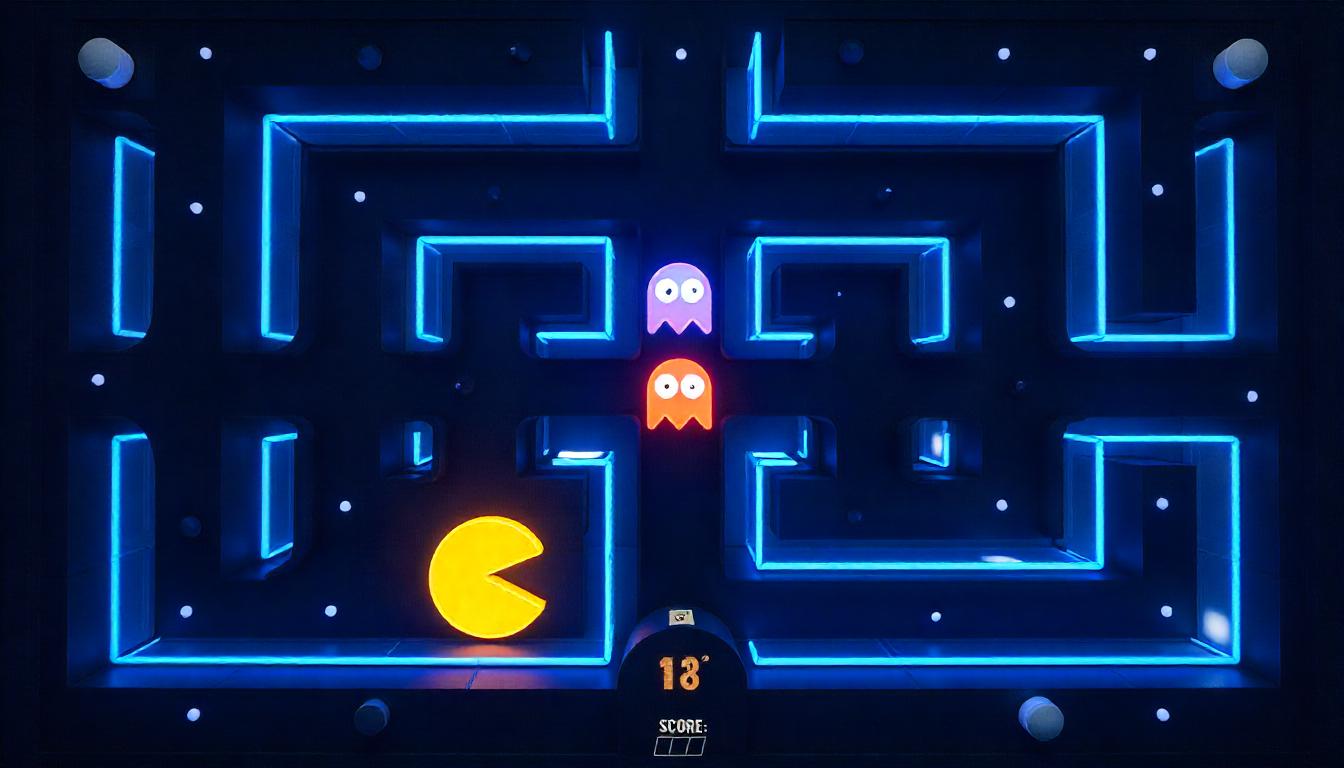Pac-Man, released in 1980 by Namco, is one of the most influential arcade games in history. Featuring a simple yet addictive gameplay mechanic, players control Pac-Man as he navigates a maze, eating pellets while avoiding four ghosts. The game’s innovative AI, maze design, and power-up mechanics set new standards for game development. Decades later, Pac-Man remains a cultural phenomenon, inspiring sequels, merchandise, and adaptations across multiple platforms.
Introduction
Pac-Man is a name that resonates with gamers of all ages. Since its release in 1980, it has become one of the most recognized and beloved video games ever. Developed by Namco and designed by Toru Iwatani, Pac-Man transformed the gaming industry with its unique non-violent gameplay, strategic elements, and engaging character design. This article explores the game’s history, gameplay mechanics, development, cultural impact, and legacy.
1. The Origins of Pac-Man
1.1 Concept and Development
- Toru Iwatani, the creator of Pac-Man, wanted to design a game that appealed to a broader audience, including women, as most arcade games at the time were centered around war and sports themes.
- Inspired by the idea of eating, Iwatani came up with a game where the main character, Pac-Man, would move around a maze consuming dots.
- The character’s design was influenced by a pizza with a missing slice, forming the now-iconic round shape of Pac-Man.
- The game was originally named Puck-Man in Japan, but it was changed to Pac-Man for international release to avoid vandalism of arcade cabinets (as “Puck” could be easily changed to an offensive word).
1.2 Initial Release and Popularity
- Released in Japan on May 22, 1980, and later in North America in October 1980, Pac-Man became an instant hit.
- It broke away from the industry norm of shooting and space-themed games, offering a refreshing gameplay experience.
- The game’s massive success led to numerous ports, sequels, and adaptations across multiple platforms.
2. Gameplay Mechanics and Strategy
2.1 Basic Gameplay
- Players control Pac-Man, navigating a maze filled with 240 pellets that must be consumed to complete the level.
- Four ghosts—Blinky (red), Pinky (pink), Inky (blue), and Clyde (orange)—chase Pac-Man.
- Power Pellets, found in the four corners of the maze, temporarily turn the ghosts blue, allowing Pac-Man to eat them for extra points.
2.2 Ghost AI and Behavior
- Each ghost has a unique behavior pattern:
- Blinky (Red) – Aggressive, constantly chasing Pac-Man.
- Pinky (Pink) – Predicts Pac-Man’s movements and tries to cut him off.
- Inky (Blue) – Unpredictable, using a mix of Blinky’s and Pinky’s behaviors.
- Clyde (Orange) – Random movement, sometimes chasing, sometimes retreating.
- Understanding ghost behavior is crucial for high scores.
2.3 Scoring System
- Small pellets: 10 points each
- Power Pellets: 50 points each
- Eating ghosts: 200, 400, 800, 1600 points (successive eats double the score)
- Bonus fruits appear at intervals, adding extra points.
3. Game Design and Innovation
3.1 Non-Violent Gameplay
- Unlike popular arcade games like Space Invaders, Pac-Man focused on evasion and strategy rather than direct combat.
- The game introduced power-ups, allowing temporary advantages—a mechanic widely adopted in later games.
3.2 The Influence of Mazes
- The carefully designed maze layout created a sense of both challenge and familiarity.
- Later levels introduced faster ghost speeds, making it increasingly difficult to survive.
3.3 Sound and Visuals
- Pac-Man’s waka-waka sound became iconic.
- The bright colors, simple design, and animated characters made it easy to understand and visually appealing.
4. Cultural Impact and Legacy
4.1 Pac-Man Fever and Merchandising
- The success of Pac-Man led to the Pac-Man Fever phenomenon of the 1980s.
- Merchandise included toys, lunchboxes, board games, clothing, and even a hit song titled Pac-Man Fever by Buckner & Garcia.
- Pac-Man had a Saturday morning animated TV show, further cementing its cultural status.
4.2 Influence on Game Design
- Inspired future game mechanics, such as power-ups, AI enemy patterns, and maze-based levels.
- Games like Bomberman, Metal Gear, and even stealth-based games owe some design elements to Pac-Man.
4.3 Evolution and Modern Adaptations
- Over the years, Pac-Man spawned numerous sequels and spin-offs:
- Ms. Pac-Man (1982) – Featured improved AI and multiple maze designs.
- Pac-Man Championship Edition (2007) – A modern, fast-paced version.
- Pac-Man 99 (2021) – A battle-royale-style Pac-Man experience.
- The character remains a gaming icon, appearing in Super Smash Bros. and other crossover titles.
5. Fun Facts and Records
5.1 The Perfect Pac-Man Score
- The highest possible score in the game is 3,333,360 points, achieved by eating every pellet, ghost, and fruit without dying.
- Billy Mitchell became the first person to achieve a perfect score in 1999.
5.2 The Infamous Level 256 Glitch
- Due to a memory overflow, Level 256 of the original Pac-Man is glitched, displaying random symbols and making the game unplayable.
- This became a famous gaming mystery and inspired the 2015 movie Pixels.
6. Conclusion: Why Pac-Man Still Matters
More than four decades after its release, Pac-Man continues to entertain and inspire gamers worldwide. Its simple yet deep gameplay, charming characters, and revolutionary AI mechanics make it a timeless classic. From arcade machines to modern consoles, Pac-Man’s legacy remains strong, proving that great game design is truly timeless.
